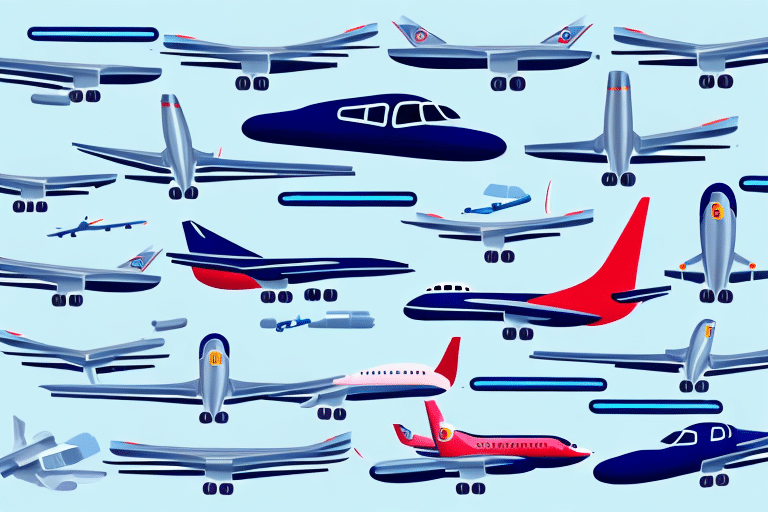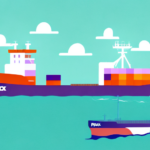Air Freight: Pros, Cons, and Best Use Cases
Air freight is renowned for its speed and reliability, making it a preferred choice for businesses with time-sensitive shipments. However, it comes with higher costs and certain limitations. Understanding the advantages and disadvantages of air freight can help you determine if it's the right fit for your shipping needs.
Advantages of Air Freight
- Speed: Air freight is the fastest mode of transportation, typically delivering goods within 24 to 48 hours.
- Reliability: Scheduled flights reduce the risk of delays, ensuring timely deliveries even to remote locations.
- Security: Enhanced security measures at airports safeguard high-value shipments against theft and damage.
- Reduced Risk of Damage: Proper handling and shorter transit times decrease the likelihood of goods being damaged.
Disadvantages of Air Freight
- Cost: Air freight is significantly more expensive than other modes, with rates based on weight and volume.
- Weight and Size Restrictions: There are limitations on the size and weight of cargo, making it unsuitable for very large or heavy shipments.
- Environmental Impact: Air transportation contributes to higher carbon emissions compared to land and sea freight.
- Limited Cargo Types: Hazardous materials and certain perishables may face restrictions or higher costs.
When to Choose Air Freight
Air freight is ideal for:
- Time-Sensitive Deliveries: Perishable goods like fresh produce, flowers, and pharmaceuticals.
- High-Value Items: Electronics, jewelry, and other valuables that require secure and quick transport.
- Emergency Shipments: Situations requiring rapid replenishment of inventory or urgent deliveries.
Calculating Air Freight Costs
Air freight costs are influenced by several factors, including:
- Weight and Volume: Charges are based on the greater of actual weight or volumetric weight.
- Distance: Longer distances typically incur higher costs.
- Fuel Surcharges: Fluctuations in fuel prices can affect overall shipping costs.
- Additional Services: Insurance, customs clearance, and expedited handling may add to the total cost.
Using an online air freight calculator can help estimate shipping expenses accurately.
Land Freight: Benefits, Challenges, and Best Practices
Land freight remains a cornerstone of the shipping industry, offering flexibility and cost-effectiveness. However, it also presents challenges that businesses must navigate to optimize their supply chains.
Advantages of Land Freight
- Cost-Effective: Generally cheaper than air and sea freight, especially for short to medium distances.
- Flexibility: Extensive road networks allow delivery to a wide range of destinations.
- Control: Greater oversight of the transportation process, with options for real-time tracking.
- Environmental Benefits: Lower carbon emissions per unit compared to air freight.
Disadvantages of Land Freight
- Transit Time: Slower compared to air freight, which may not suit urgent shipments.
- Susceptibility to Delays: Traffic congestion, road conditions, and weather can impact delivery schedules.
- Limited by Geography: Inaccessible for cross-ocean shipments or to locations without road infrastructure.
Types of Land Freight Services
- Full Truckload (FTL): Suitable for large shipments that fill an entire truck, offering faster transit times.
- Less-than-Truckload (LTL): Ideal for smaller shipments that share truck space with other cargo, reducing costs.
- Intermodal Transportation: Combines multiple transportation modes, such as trucks and trains, for long-distance shipments.
Choosing the Right Land Freight Provider
When selecting a land freight provider, consider:
- Reputation: Look for companies with positive reviews and reliable service records.
- Coverage Area: Ensure the provider can service your specific routes and destinations.
- Service Offerings: Additional services like tracking, insurance, and expedited shipping can add value.
- Cost: Compare quotes from multiple providers to find the best balance between cost and service quality.
Sea Freight: Cost-Effective and Sustainable Shipping
Sea freight is a staple for global trade, offering unmatched cost efficiency for large and bulky shipments. While it excels in affordability and sustainability, it also faces challenges related to speed and reliability.
Benefits of Sea Freight
- Affordability: Typically the most economical choice for transporting large volumes of goods.
- Capacity: Capable of handling massive shipments, including oversized and heavy cargo.
- Environmental Efficiency: Lower carbon emissions per ton-mile compared to air and land freight.
Challenges of Sea Freight
- Transit Time: Significantly slower, often taking weeks to reach international destinations.
- Port Congestion: Delays at ports due to high traffic or logistical issues can impact delivery schedules.
- Weather Vulnerability: Severe weather conditions can disrupt shipping routes and schedules.
- Customs and Regulations: Navigating international customs can be complex and time-consuming.
Choosing the Right Shipping Container
Selecting an appropriate shipping container is crucial for protecting your goods during transit. Options include:
- Standard Containers: Available in 20-foot and 40-foot sizes, suitable for a wide range of cargo.
- High Cube Containers: Offer additional height for oversized shipments.
- Refrigerated Containers (Reefers): Ideal for perishable goods requiring temperature control.
Assess the nature of your cargo, including size, weight, and storage requirements, to determine the most suitable container type.
Comparing Freight Modes: Making the Right Choice
Choosing the appropriate freight mode is essential for optimizing your supply chain. This decision should be based on various factors that align with your business objectives and shipment requirements.
Factors to Consider
- Cost: Balance your budget against the affordability of each shipping mode.
- Transit Time: Determine the urgency of your shipments and choose a mode that meets your deadlines.
- Cargo Size and Weight: Larger and heavier shipments may be more cost-effective via sea or land freight.
- Destination: Accessibility and distance can influence the best transportation mode.
- Risk and Reliability: Consider the potential for delays, damage, or loss with each mode.
Incorporating Multiple Modes of Transportation
Adopting a multimodal transportation strategy can leverage the strengths of different freight modes, enhancing efficiency and reducing costs. For example:
- Air-Sea Combination: Use air freight for urgent components and sea freight for bulk materials.
- Land-Air Integration: Employ land freight for regional distribution and air freight for long-distance deliveries.
Collaborating with a freight forwarder can facilitate seamless integration of multiple transportation modes, ensuring a cohesive and efficient shipping process.
Future Trends in Shipping: Technology and Sustainability
The shipping industry is undergoing significant transformations driven by technological advancements and a growing emphasis on sustainability. Staying abreast of these trends is crucial for businesses aiming to optimize their logistics strategies.
Emerging Technologies
- Automation: Automated cargo handling and AI-driven logistics are enhancing efficiency and reducing human error.
- Blockchain: Facilitates transparent and secure tracking of shipments, improving trust and accountability.
- Drones and Autonomous Vehicles: Innovate last-mile delivery, reducing transit times and operational costs.
Sustainable Shipping Practices
- Eco-Friendly Fuels: Adoption of biofuels and other sustainable energy sources to lower carbon emissions.
- Emission Reduction Technologies: Implementation of technologies like hull designs and energy-efficient engines.
- Green Logistics: Optimizing routes and consolidating shipments to minimize environmental impact.
Impact on Shipping Strategies
Embracing these trends can offer competitive advantages, such as:
- Cost Savings: Automation and optimized routes can lead to significant reductions in operational costs.
- Enhanced Reliability: Technologies like blockchain improve transparency and reduce the likelihood of disputes.
- Brand Reputation: Sustainable practices appeal to environmentally conscious consumers and stakeholders.
Staying informed about these advancements and integrating them into your shipping strategy can position your business for long-term success in a rapidly evolving industry.
Conclusion
Choosing the right mode of transportation—air, land, or sea freight—requires a careful evaluation of your business needs, budget, and shipment specifics. By understanding the strengths and limitations of each option, calculating associated costs, and staying informed about industry trends, you can make informed decisions that enhance your supply chain efficiency and support your business growth.






















